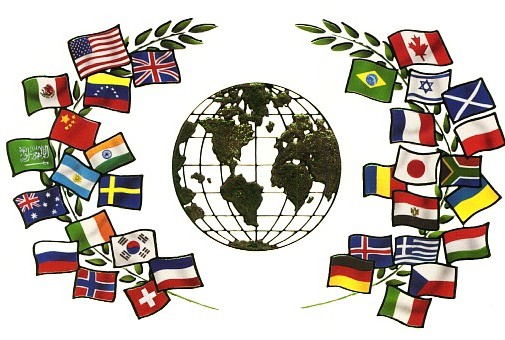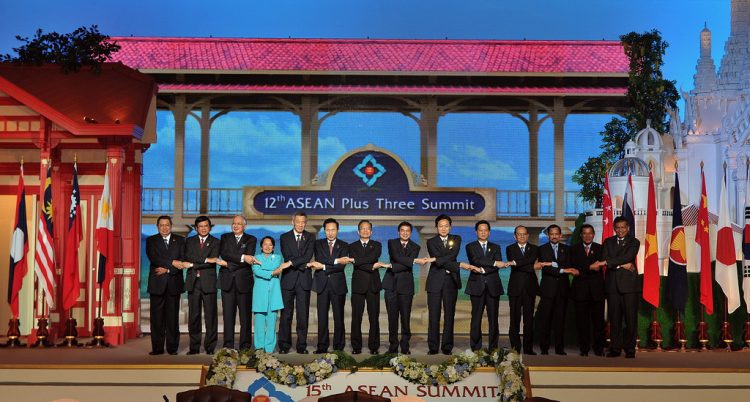1. Introduction: The Enduring Importance of International Relations
International Relations (IR) is the study and practice of how states, institutions, and non-state actors interact across national borders. In the 21st century—an era defined by rapid technological progress, economic interdependence, and unprecedented global challenges—IR remains at the heart of understanding conflict, cooperation, and the shifting balance of power.
The contemporary global order is increasingly characterized by fragmentation: the rise of new powers challenges the dominance of established states; populism and nationalism strain multilateral institutions; and transnational crises—such as climate change, pandemics, and cyber threats—require coordinated responses. Understanding the dynamics of IR has never been more crucial.
2. Theoretical Foundations of International Relations
International Relations as a discipline has developed several major schools of thought, each providing unique insights into global affairs.
2.1 Realism
Realism views international politics as an anarchic system where states prioritize survival, power, and security. Classic realist thinkers like Hans Morgenthau and later structural realists like Kenneth Waltz argue that power competition is inevitable, and conflict often arises from the struggle for dominance.
Key concepts:
- Balance of Power: States form alliances to counter stronger rivals.
- Security Dilemma: One state’s pursuit of security can inadvertently threaten others.
2.2 Liberalism
Liberal theory emphasizes the potential for cooperation through institutions, democracy, and economic interdependence. Thinkers such as Immanuel Kant and Robert Keohane highlight the role of international law, norms, and organizations (like the UN and WTO) in mitigating conflict.
Key concepts:
- Democratic Peace Theory: Democracies are less likely to fight each other.
- Institutionalism: Cooperation is more likely when transparent rules and enforcement mechanisms exist.
2.3 Constructivism
Constructivism argues that international relations are shaped not only by material power but also by ideas, identities, and norms. Alexander Wendt famously asserted that “anarchy is what states make of it,” suggesting that shared beliefs can transform rivalries into cooperation.
2.4 Critical and Post-Colonial Approaches
Emerging schools critique the traditional Western-centric framework, emphasizing issues like inequality, historical legacies of imperialism, gender, and environmental justice. These perspectives broaden the lens of IR to include the experiences of marginalized groups and developing nations.
3. The Post-Cold War Global Order
3.1 Unipolarity and Its Limits
The collapse of the Soviet Union in 1991 ushered in an era of U.S. dominance, often described as a “unipolar moment.” American leadership underpinned a liberal international order promoting free markets, democratic governance, and multilateral cooperation.
However, the unipolar system faced challenges:
- The wars in Afghanistan and Iraq revealed the limits of U.S. military power.
- The 2008 financial crisis undermined confidence in liberal capitalism.
- Rising powers such as China and India questioned the Western-led order.
3.2 Multipolarity and Great Power Competition
The 21st century is increasingly multipolar:
- China has emerged as a global economic and military power.
- Russia has reasserted itself regionally and globally.
- Middle powers like Brazil, Turkey, and South Africa play growing roles in regional diplomacy.
This distribution of power has renewed strategic rivalries and complicated efforts to maintain a stable global order.
4. Key Issues in Contemporary International Relations
4.1 Security and Armed Conflict
Security remains a core concern:
- The Ukraine War has revived fears of interstate conflict in Europe.
- Nuclear proliferation in regions like the Korean Peninsula and the Middle East poses existential risks.
- Cyber warfare and autonomous weapons systems are redefining modern conflict.
4.2 Global Governance
Institutions such as the United Nations, World Trade Organization, and World Health Organization have played critical roles in managing global challenges. However, they face crises of legitimacy and effectiveness as major powers contest their authority and as transnational issues—like pandemics and climate change—outpace institutional capacities.
4.3 Trade and Economic Interdependence
Globalization has deepened economic ties but also sparked backlash:
- U.S.–China trade tensions reflect the intersection of security and economic concerns.
- Supply chain vulnerabilities revealed by the COVID-19 pandemic have prompted many states to reconsider dependence on foreign markets.

4.4 Technology and Cyber Relations
Emerging technologies—AI, quantum computing, and digital currencies—are reshaping global power structures:
- Cybersecurity has become a frontline of national defense.
- Tech competition increasingly drives geopolitical rivalries, with control over semiconductors and data flows becoming strategic priorities.
4.5 Human Rights and Human Security
Human rights advocacy has become a prominent element of international relations, influencing diplomatic decisions and sanctions. Issues such as refugee crises, gender equality, and climate-induced migration have reframed security in human-centric terms.
5. Climate Change and the New Geopolitics
Climate change has emerged as a defining factor in international relations, influencing:
- Resource competition: Access to water, fertile land, and energy sources.
- Geopolitical shifts: Melting Arctic ice opens new shipping routes and territorial disputes.
- Conflict risk: Climate-induced displacement intensifies instability in vulnerable regions.
Efforts like the Paris Agreement (2015) exemplify global cooperation but highlight tensions between developed and developing countries over responsibilities and costs.
6. Regional Perspectives in International Relations
6.1 The Indo-Pacific
The Indo-Pacific has become the epicenter of great-power competition. Disputes over the South China Sea, Taiwan, and maritime security shape the U.S.–China rivalry and drive regional alliances like the Quad (U.S., Japan, India, Australia).
6.2 Europe and NATO
Russia’s invasion of Ukraine in 2022 revitalized NATO and reshaped European security policies. Energy dependence and migration continue to challenge EU cohesion.
6.3 The Global South
Countries in Africa, Latin America, and parts of Asia are asserting greater agency in global governance debates, pushing for reforms in institutions like the UN Security Council and more equitable access to trade and technology.
7. The Role of Non-State Actors
International relations are no longer dominated solely by states:
- Multinational corporations influence global markets and supply chains.
- Non-governmental organizations (NGOs) advocate for human rights, environmental protection, and humanitarian relief.
- Terrorist networks and transnational crime groups challenge state authority and security.
- Social movements and youth activism (e.g., climate strikes) shape international agendas and norms.
8. The Future of International Relations: Challenges and Opportunities
8.1 Toward a Multipolar but Interdependent World
Power is diffusing among states and non-state actors, yet interdependence in trade, technology, and global health requires cooperation. The tension between competition and collaboration will define international relations in the coming decades.
8.2 Reforming Global Governance
Strengthening international institutions to address collective challenges—climate change, pandemics, financial crises—remains a priority. This will require balancing sovereignty concerns with the need for effective multilateralism.
8.3 Ethical and Normative Dimensions
Global problems such as AI governance, biotechnology, and data privacy demand not only technical solutions but also ethical frameworks that respect human dignity and rights.
8.4 Prospects for Peace and Stability
While conflict persists, diplomacy, arms control agreements, and grassroots peace-building efforts continue to provide hope. Expanding dialogue between major powers and empowering regional organizations could reduce tensions.
9. Conclusion: Navigating a Complex and Interconnected World
International Relations is not merely an academic subject; it is a practical guide for understanding and addressing the world’s most pressing problems. In a fragmented yet interconnected global landscape, the ability to manage power transitions, foster cooperation, and uphold shared values is crucial.
The challenges of the 21st century—climate change, pandemics, technological disruption, and inequality—cannot be solved by any single nation acting alone. Instead, they require renewed commitment to dialogue, diplomacy, and collective action.
The future of international relations will be defined by whether humanity can transcend narrow national interests and embrace a shared vision of peace, prosperity, and sustainability. As the world grows more complex, the discipline of IR offers the tools and insights needed to navigate uncertainty and build a more stable and just global order.

















































